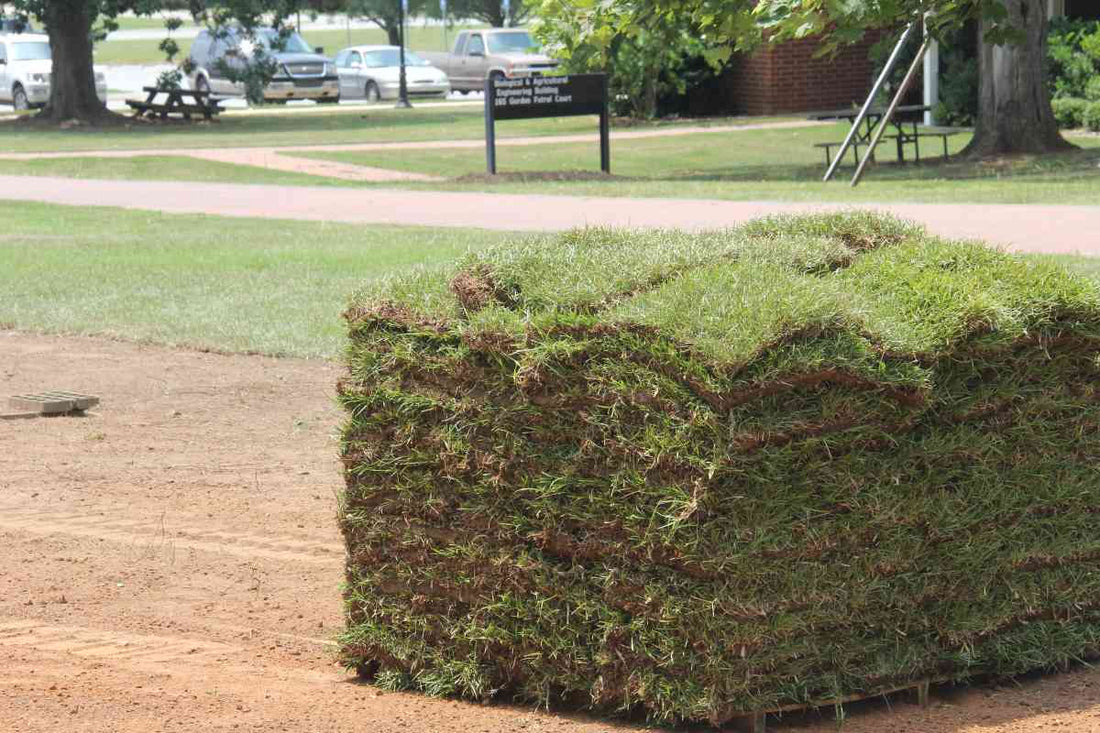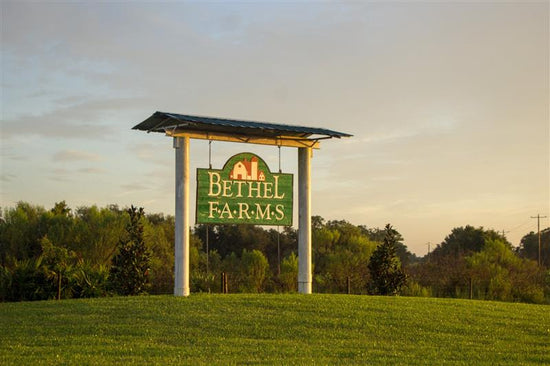
How Much Sod Do I Need: Get the Right Amount for Your Lawn
Jamie TedderLaying fresh sod is the quickest way to achieve dense, green coverage on your lawn, but ordering the correct amount is key to a successful installation. Buying too much sod leads to unnecessary costs and waste, while ordering too little can leave you scrambling for more, potentially causing delays and uneven growth. Whether you're installing sod for a residential lawn, commercial landscape, or a new project, calculating the correct amount ensures a smooth process and a beautiful final result.
Understanding Your Sod Needs
Before measuring your lawn, consider a few factors that influence your sod requirements:
Purpose of Installation: Are you replacing patchy grass in a residential lawn, covering a commercial space, or landscaping a specific area? The scale of your project will determine the quantity needed.
Climate and Soil Conditions: Warm-season grasses like Bermuda, Zoysia, and St. Augustine thrive in hot, humid environments like Florida. Choosing sod suited to your region ensures better establishment and long-term success.
Maintenance Commitment: Sod establishes quickly, requiring less maintenance during the establishment phase compared to seeding. However, ongoing upkeep varies depending on the type of grass you choose. For example, bermudagrass sod grows aggressively and needs frequent mowing to maintain a neat and healthy appearance.

Measuring Your Area for Sod Installation
Proper measurement is the first step in determining how much sod you need. This pre-installation step ensures you purchase the correct amount, avoiding excess spending and shortages that can delay your project. Sod is an investment, and getting your measurements right helps maximize its value.
Common mistakes include underestimating square footage or forgetting to account for irregular shapes and obstacles. Following an accurate measurement process will help you avoid these pitfalls.
How to Measure Your Lawn
-
Use a measuring tape or GPS service: A simple measuring tape will work for smaller areas. But if you're covering a large space, consider a GPS or an online mapping tool to get a quick and accurate measurement.
-
Multiply length by width: The easiest way to determine square footage is to multiply the length by the width of the area in feet. If your lawn is a simple rectangle or square, measure both dimensions and multiply them together to get the total square footage.
-
Account for obstacles and irregular shapes: For irregularly shaped lawns, break the area down into smaller sections—squares, rectangles, circles, or triangles—and calculate each separately. Add up the sections to determine the total square footage.
Calculating the Correct Amount of Sod
Once you have the total square footage of your lawn, use a sod calculator or a simple formula to determine how much sod you need. The general rule is:
Total square footage = (Area Length × Width) + (Additional irregular sections, if applicable)
If your lawn has walkways, trees, or garden beds, subtract those areas from your total calculation. Because sod is typically sold in square feet or by the pallet, knowing your total square footage helps you purchase the correct amount. Read here for more sod measurement tips for irregularly shaped lawns.
Standard Sod Coverage
Sod is usually sold by the pallet, with one pallet covering around 400–500 square feet. To ensure you don’t run short, add an extra 5-10% to account for trimming and fitting around edges. Having extra sod is preferable to running out mid-installation and needing to place a second order.

Factors That Affect Sod Requirements
Several factors may influence the amount of sod you actually need:
-
Lawn shape and obstacles: If your yard has curved edges, trees, or structures, cutting and fitting the sod will require additional pieces.
-
Sloped areas: Sloped landscapes often need extra sod due to runoff or erosion during installation.
-
Waste and trimming: Some waste is inevitable when shaping sod around irregular edges, so ordering a bit more than your calculation suggests prevents shortages.
Choosing the Right Sod
At Bethel Farms, we offer high-quality warm-season grasses suited for various landscapes and maintenance levels. Whether you need a durable sod for high-traffic areas or a shade-tolerant variety, we provide options to fit your needs.
Our selection of grass sod for sale offers unique benefits in terms of color, texture, and resilience. Our expert team can guide you in selecting the best variety based on your climate, soil conditions, and lawn usage. We offer improved varieties like Bimini Bermuda, known for its fine texture and superior traffic tolerance; Durban Seashore Paspalum, which thrives in coastal areas with sandy soils; and Gateway Zoysiagrass, a resilient option suited for high-traffic lawns.
Sod Availability and Sizing
Bethel Farms supplies sod in pallets, with each pallet covering 400 square feet. Using a sod cutter, you can trim pieces to fit your lawn’s unique shape. We recommend adding 5-10% extra sod to account for cutting, trimming, and minor installation errors. Having a little extra is always better than running out before finishing the project.
Sod Delivery for Successful Installation
Once you’ve determined the right type and amount of sod for your landscape, scheduling your sod delivery at the right time is crucial. Fresh sod should be installed on the same day it arrives to keep it from drying out or becoming damaged. Plan for delivery on the installation day, ensuring you have the necessary tools and preparation completed in advance.

Final Thoughts
Accurate sod measurement is crucial to avoid waste and ensure a seamless sod installation. By following the steps outlined in this guide, you can confidently calculate and order the right amount of sod for your project.
At Bethel Farms, we provide top-quality sod grass for sale to homeowners and landscapers in Central Florida. Contact us today for expert advice and to place your order!

